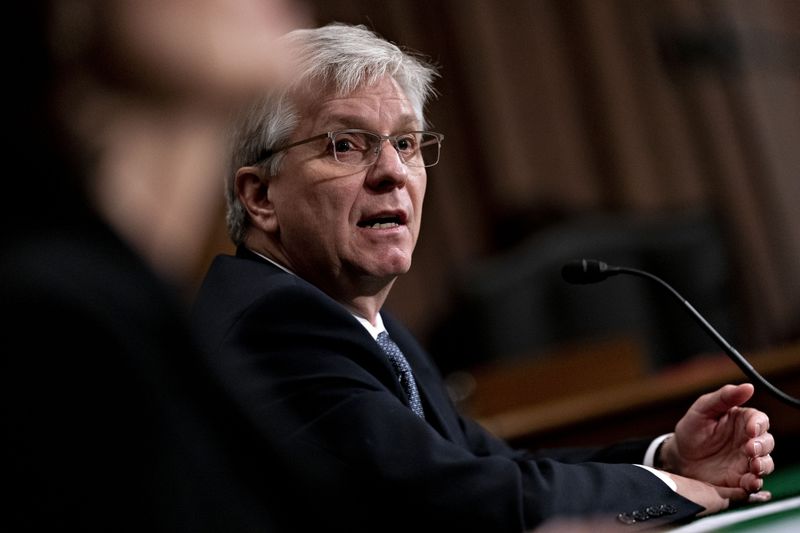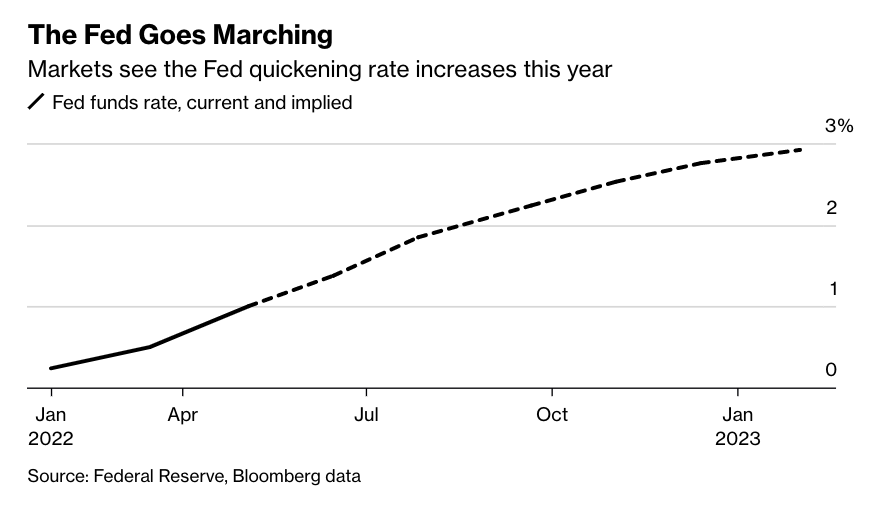
Two of the Federal Reserve’s most hawkish policy makers defended the central bank on Friday against charges that it had fallen well behind the curve in fighting inflation.
Fed Governor Christopher Waller and St. Louis Fed Bank President James Bullard argued that critics don’t take enough account of the tightening of financial conditions that the Fed engineered even before it began raising interest rates in March.
“Credible forward guidance means market interest rates have increased substantially in advance of tangible Fed action,” Bullard said in remarks prepared for a conference organized by the Hoover Institution at Stanford University. “This provides another definition of ‘behind the curve,’ and the Fed is not as far behind based on this definition.”

Waller, who was previously head of research at the St. Louis Fed, made a similar point, arguing that a shift in Fed rhetoric led investors in financial markets to start pricing in rate increases in September, leading to a rise in 2-year Treasury yields that he estimated were equivalent to two quarter-point rate increases by the central bank.
“When looked at this way, how far behind the curve could we have possibly been if, using forward guidance, one views rate hikes effectively beginning in September 2021?” he said.
The Fed actually lifted rates in March, and followed that with a half a percentage-point increase this month, the largest rate increase since 2000. Fed Chair Jerome Powell signaled officials might make similar moves at upcoming meetings in June and July. The Fed also announced that it will start trimming its bond holdings in June at a monthly pace of $47.5 billion, increasing it to $95 billion after three months.
Read More: Powell’s Inflation Strategy Takes Fire From Ex-Top Fed Officials
A series of speakers at the conference, titled “How Monetary Policy Got Behind The Curve And How To Get Back,” criticized the Fed for being late to react to rising inflation, which is now at a four-decade high.
Waller said the Fed was focused on returning the U.S. economy to full employment and that its attempts to do that were muddied by a string of weak employment reports that were later revised significantly upward. He also said the Fed was not alone in not anticipating the big takeoff in inflation.
“If we knew then what we know now, I believe the Committee would have accelerated tapering and raised rates sooner,” Waller said. “But no one knew, and that’s the nature of making monetary policy in real time.”
Financial markets have swung sharply this week as investors digested the Fed’s latest policy move, as well as Powell clearly signaling that officials were not currently considering a larger 75 basis-point increase.
“I never rule anything out. So I think anything would be on the table,” Richmond Fed President Thomas Barkin told Market News International in a podcast published on Friday, referring to the possibility of a 75 basis-point rate hike. “I’ll just say our pace is pretty accelerated right now, and so if you go to the pace that the chairman suggested, that’s a pretty accelerated pace.”
The central bank has faced criticism that it is behind the curve in responding to the hottest inflation in 40 years. Consumer prices rose 8.5% in the 12 months through March, according to Labor Department data.
Officials say they want to raise rates this year to a level they deem more “neutral” for the economy, which they deem to be around 2.5%, and potentially go higher if inflation fails to come down.
Minneapolis Fed President Neel Kashkari, probably the central bank’s most dovish official, said earlier on Friday that rates may have to go above neutral unless supply-chain pressures pushing up prices abate.
Source: Bloomberg

